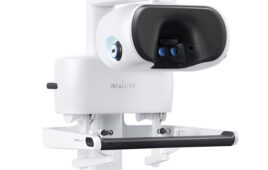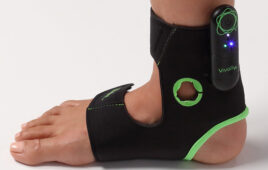
Leslie Trigg, CEO of Outset Medical [Image from Outset Medical]
Devices that are smaller and more patient-centered could help patients feel better about their treatment and make them feel like they’re in charge, according to Leslie Trigg, CEO at Outset Medical (San Jose, Calif.).
“Because you are in control of it, it’s a different experience, even if it takes the same amount of time. It’s really about control. I think when you strip that all away, what really matters to us as human beings is the value we place on being independent and in control of our own destiny. And that’s really on a human level what the driving philosophy is behind Tablo,” Trigg said.
The Tablo is Outset Medical’s 3-foot-high kidney dialysis machine. It makes clean water, produces dialysate, takes blood pressure and delivers medication — all in one compact design. The machine is no taller than a desk and features a touchscreen interface meant to make treatment easier in clinics and hospitals. Its low-profile design is much smaller than other dialysis machines that require special filtration centers and large machines in the office.
“Tablo was launched in some of the existing 6,500 dialysis clinics [in the U.S.] to enable patients to do dialysis on their own. And this idea – we call in-center self-care – is really akin to self-serve dialysis. We kind of just borrowed on the concept of self-serve in retail,” Trigg said. “We are borrowing from that retail concept of self-care and bringing it into the dialysis setting because the system is so easy to use for the average patient. This is an opportunity for the patient to come in and set up Tablo on their own and manage their treatment.”
While Tablo is not currently available for home use, personalizing treatment and making it convenient helps patients feel at ease with their conditions. There are certain chemotherapy treatments that can be done at home, and the National Institutes of Health reports that it can improve patient outcomes and improve the quality of care.
Bringing the treatment closer to the patient is important since people are living longer and it provides a cost-effective solution to different treatments.
“People are living longer,” Trigg said. “If people are able to manage cancer as a chronic disease rather than an acute terminal episode, you have an opportunity – and obviously a responsibility – to make those sorts of chronic [therapies] that are maximumly cost-effective for patients and maximumly cost efficient for payers and providers.”






